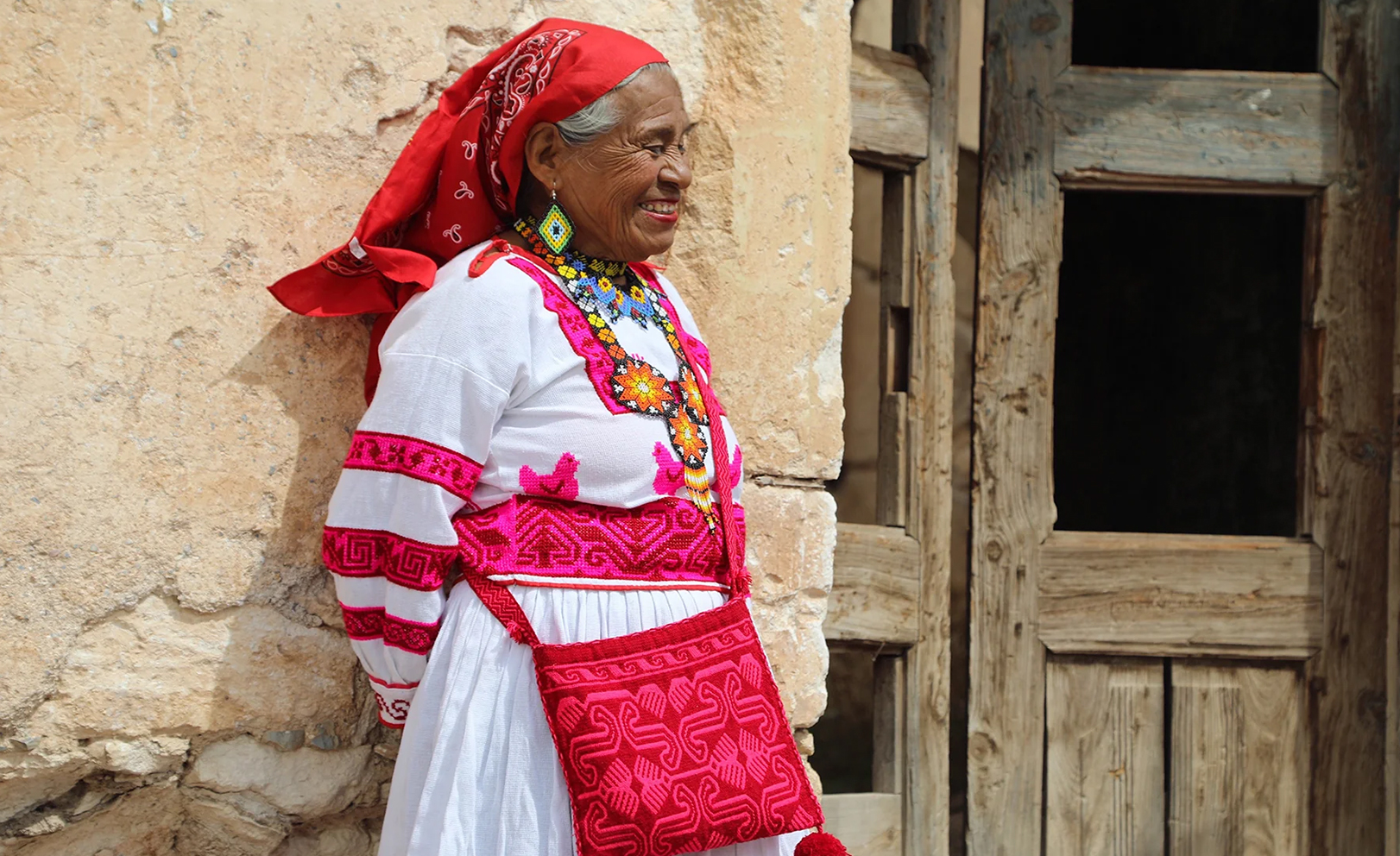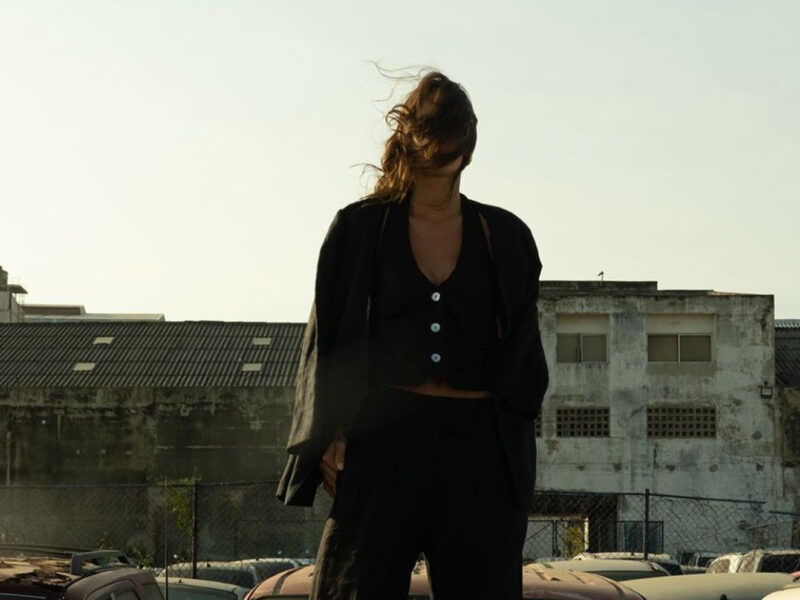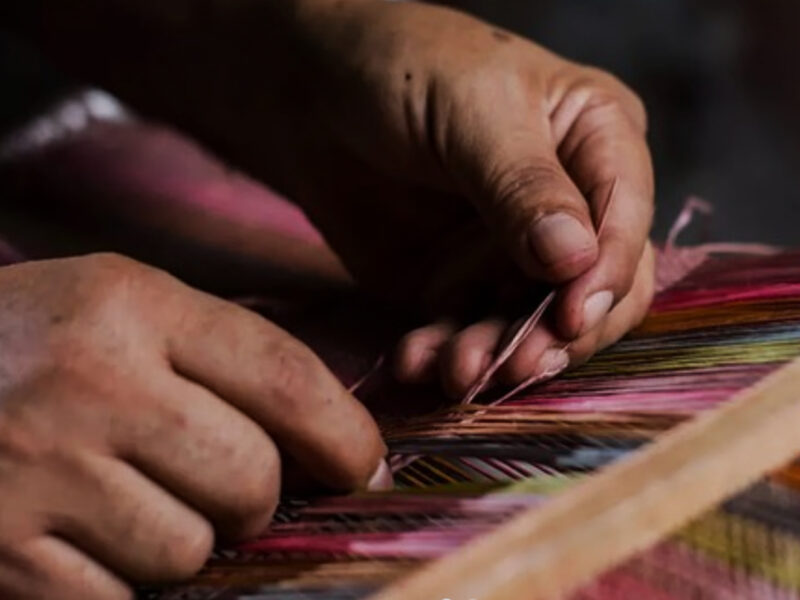
PATRICIA GOVEA: A Story to Tell
As I drove uphill through the heart of the mountains on a narrow, serpentine gravel road, I was keenly aware that any false move could send me spiraling downhill. My destination remained uncertain. I’d set off on this adventure in pursuit of an elusive, ancient embroidery, never imagining that destiny had something greater waiting for me on the other side of the hill: a life’s purpose.
My story begins when I became a fashion merchant, at the age of seven. Once a week, my parents would drop me off at English classes, during which I negotiated early departure times with my teacher, so I could frequent a nearby shop to procure textiles. I sacrificed candy, enabling my modest allowance to stretch towards a few meters of fabric. Next, I’d sneak into my neighboring seamstress’s house, where her sewing machine was always at the ready. She would secretly stitch chic miniskirts for me, which were a forbidden garment at my age. I would wear them beneath my school uniform, and only when certain of my parents’ departure, would the showtime begin! Among my classmates, my designs caused quite a stir, and I told them I knew just where to find them, remaining an anonymous designer. Soon, my collections began to extend to bags and fabric pencil cases. My very first business was a total success.
At the tender age of eighteen, I became a mother and had the pressing need to provide for my son. Operating on a tight budget, I journeyed to LA, returning to Nayarit, Mexico with a suitcase bursting with chic apparel, determined to sell every piece. My friends were my initial clients. Word spread to their acquaintances, and within a handful of years, I found myself jetting to Europe every month, bringing esteemed labels such as Roberto Cavalli and Missoni to my renowned boutique. However, the true revelation began during a Paris sojourn, within the hallowed walls of the Louvre. There, a substantial crowd gathered with anticipation, to appreciate a large work of art. The piece was by the Wixaritári, an indigenous community from my hometown, and had a story to tell. Everyone was raving about the allure of their cosmovision, the mystique cloaking of their sacred symbols, and their exquisite, distinctive color palette. Witnessing this global appreciation of my culture was a revelation in itself, and quite frankly, I was a little embarrassed that everyone at the museum knew more about it than I did.
I ventured back to Nayarit bearing a vision: a refined white blouse, meticulously hand-embroidered by the Wixaritári, o travel back to Europe with a suitcase brimming with unique Mexican treasures. In pursuit of the most adept artisans, I encountered Lourdes, an indigenous leader who promised to guide me to them, but asserted her presence was key to their acceptance of me. As though our destination was a mere stone’s throw away, she stepped into my car, providing direction. Ascending on an increasingly steep and constricted path, I eventually posed the question: how much longer? “Eight hours,” she replied. I was already embarked on this journey, with no intention of retreating.
We came upon a river amid the hills. Its crossing was only achievable through a two-hour voyage on a modest catamaran. Luckily, they permitted my car on board, alongside the villagers, children, and donkeys. Some passengers used this boat daily to get to work, following lengthy treks from their homes. Numerous children embarked on their journey every Monday at 2 am to ensure punctuality for the boat’s departure, continuing to walk another five hours to school, where they resided until Friday. I uncovered a reality just beyond the hill of my hometown, unnoticed and unspoken. A couple of hours after the catamaran ride, we finally reached our destination: Naranjito de Copal, a Wixárika community.
I was greeted warmly by strong, self-sufficient women hampered by limited resources, infrastructure, and opportunities. Nonetheless, they were committed to fostering an improved life for their children, a sentiment I found familiar. They offered me the hospitality of their hearts, unveiled the richness of their culture, introduced their families, and showed me the artisanal techniques handed down by their ancestors, from the iconic Wixárika gold stitch embroidery to the cross-stitch and vibrant seed beads, weaved crystal seed beads to honor their deities. Suddenly, the idea of the blouses dissolved, supplanted by an unforeseen call within me. One that consisted of championing these women in their aspiration to ensure a better lifestyle for their children.
This is how my journey with the Wixaritári communities began. We established a foundation aimed at empowering them, providing infrastructure and opportunities that allowed them to work from home, maintain their craftsmanship, and be available for their children. We facilitated accessible education within their communities, enabling their kids to finish primary school. Together, we created Patricia Govea Collection, a brand conceived to commercialize their exquisite craftsmanship, providing a sustainable income. Today, we collaborate with over fifteen Wixaritári communities throughout Mexico.
My story is no longer just mine; now, it belongs to us. For my dream intertwines with theirs, and my purpose has evolved into something grander. It began with the vision of a blouse, but life bestowed upon me a mission and a family of extraordinary women. Together, we share laughter and tears, support and learn from each other, and celebrate every milestone reached.
Discover Patricia Govea Collection
A STORY TO TELL for PATRICIA GOVEA, amongst other writing pieces for the Brand Presentation and Website of Unidas por un sueño and Patricia Govea Collection.



